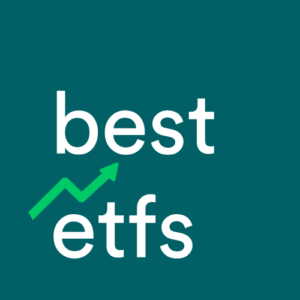Are Bendigo and Adelaide Bank Ltd (ASX:BEN) shares dirt cheap, cheap, fair value, seriously overvalued… or none of the above?
Of course, no-one can tell you for sure. We know that. You know that.
The share market can seem like a random place at the best of times.
However, in this short article I’ll go step-by-step through two key valuation tools you can use to value a share like BEN or even Macquarie Group Ltd (ASX:MQG) and Bank of Queensland Limited (ASX:BOQ).
Before I get to that, I think it’s easy to see why bank shares have been very popular since the early 1990s, when Australia began a once-in-a-generation unwinding of interest rates (from over 15%!), our population began to rise quickly and consistently, and the resources and housing booms took flight. Banks were obvious beneficiaries of these structural trends.
That said, bank shares are definitely not without their risks and nothing is ever gauranteed in the stock market. What’s more, bank shares like BEN or MQG often appear undervalued (on a price-earnings basis) because they are highly regulated, tend to experience slower growth, pay more of their profit in dividends and they are, generally speaking, mature businesses.
[ls_content_block id=”3301″]
Using “comparables” to do a PE valuation
Chances are, if you have been actively investing in shares for more than a few years you will have heard about the PE ratio. The price-earnings ratio or ‘PER’ compares a company’s share price (P) to its most recent full-year earnings per share (E). If you bought a coffee shop for $100,000 and it made $10,000 of profit last year, that’s a price-earnings ratio of 10x ($100,000 / $10,000). ‘Earnings’ is just another word for profit. So, the PE ratio is basically saying ‘price-to-yearly-profit multiple’.
The PE ratio is a very simple tool but it’s not perfect so it should only be used with other techniques (see below) to back it up. That said, one of the simple ratio strategies even professional analysts will use to value a share is to compare the company’s PE ratio with its competitors to try to determine if the share is overvalued or undervalued. It’s akin to saying: ‘if all of the other banking sector stocks are priced at a PE of X, this one should be too’. We’ll go one step further than that in this article. We’ll apply the principle of mean reversion and multiply the profits per share (E) by the sector average PR ratio (E x sector PE) to calculate what an average company would be worth.
Using Bendigo and Adelaide Bank Ltd’s share price today, plus the earnings per share data from its 2019 financial year, I calculate the company’s PE ratio to be 7.5x. This compares to the banking sector average of 10x.
Reversing the logic here, we can take the profits per share (EPS) ($0.764) and multiply it by the ‘mean average’ valuation for BEN. This results in a ‘sector-adjusted’ share valuation of $7.37.
[ls_content_block id=”3409″ para=”paragraphs”]
Dividends matter
A dividend discount model or DDM is different to ratio valuation like PE because it makes forecasts into the future, and uses dividends. Because the banking sector has proven to be relatively stable with regards to share dividends, the DDM approach can be used. However, we would not use this model for, say, technology shares.
Basically, we need only one input into a DDM model: dividends per share. Then, we make some assumptions about the yearly growth of the dividend (e.g. 2%) and the risk level of the dividend payment (e.g. 7%). I’ve used the most recent full year dividends (e.g. from 2019/2020) then assumed the dividends remain consistent but grow slightly.
To keep it simple, I’ll assume last year’s annual dividend payments are consistent. Warning: last year’s dividends are not always a good input to a DDM because dividends are not guaranteed since things can change quickly inside a business — and in the stockmarket. So far in 2020, the Big Banks have been cutting or deferring their dividends.
In any case, using my DDM we will assume the dividend payment grows at a consistent rate in perpetuity (i.e. forever), for example, at a yearly rate between 1.5% and 3%.
Next, we have to pick a yearly ‘risk’ rate to discount the dividend payments back into today’s dollars. The higher the ‘risk’ rate, the lower the share price valuation.
I’ve used a blended rate for dividend growth, and I’m using a risk rate between 9% and 14%.
My DDM valuation of BEN shares is $7.51. However, using an ‘adjusted’ dividend payment of $0.4 per share, the valuation drops to $4.55. The valuation compares to Bendigo and Adelaide Bank Ltd’s share price of $5.7.
What to do next
Obviously, the two models I used here are only the starting point of the process for analysing and valuing a bank share like BEN.
I think it’s good practice to read at least three years of annual reports, write down your thoughts and set your thesis/expectations based on what management is saying. Study management’s language in presentations and videos (are they candid or do they use lots of jargon?), read articles and research from good analysts, and seek out people who disagree with you.
Those are just some of the best strategies to use alongside your valuation tools to determine if you’re making a mistake — before you do it!
[ls_content_block id=”3302″ para=”paragraphs”]



